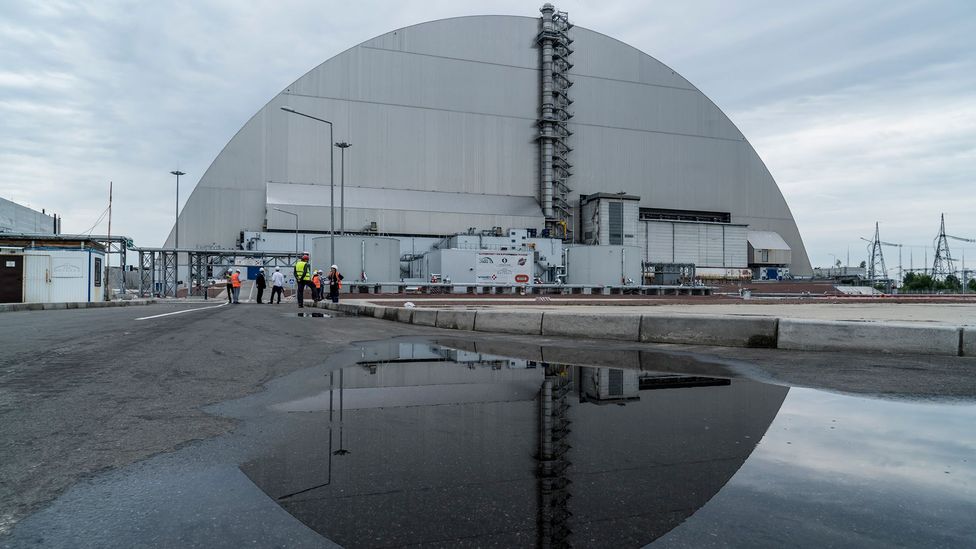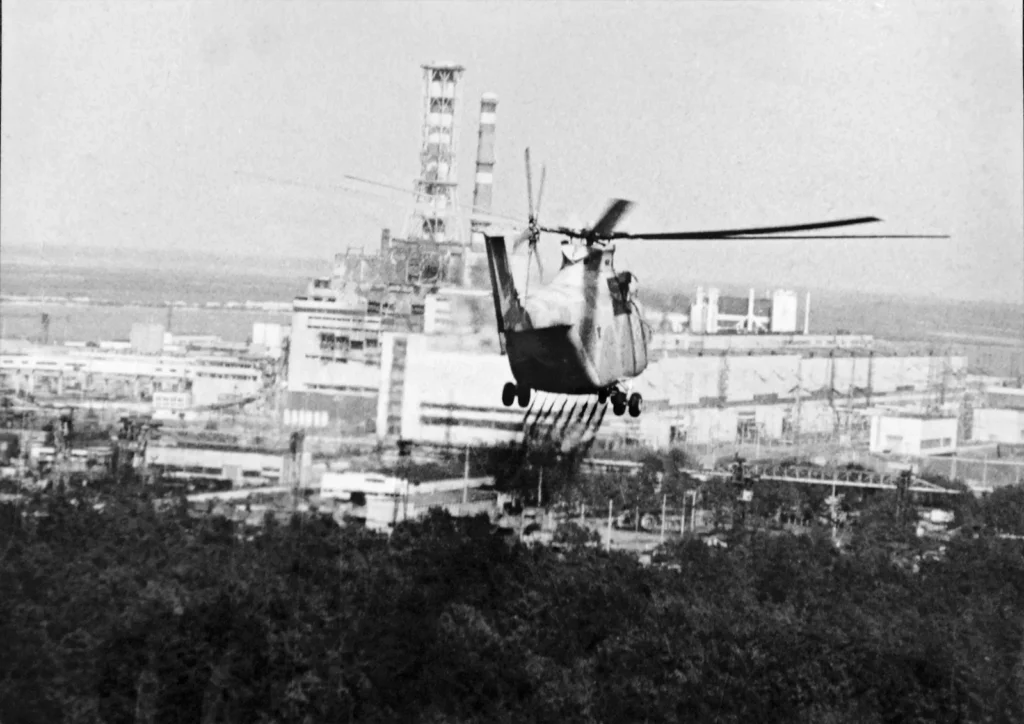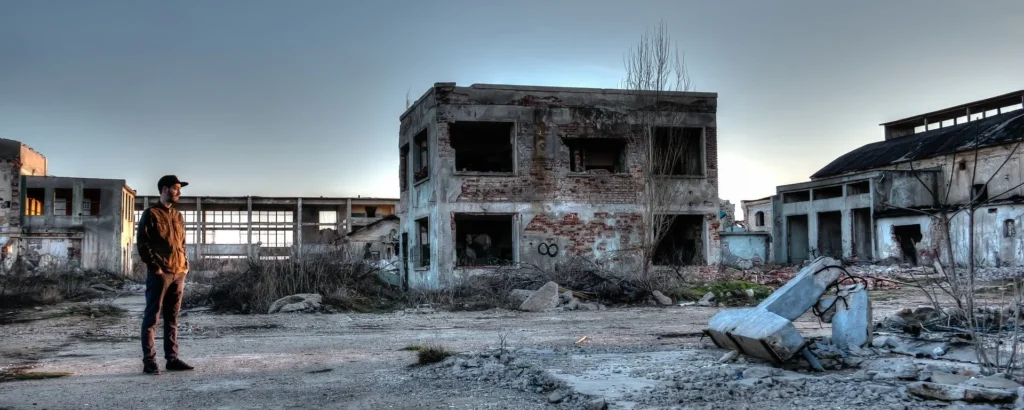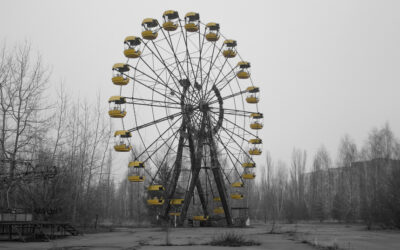The Chernobyl nuclear disaster of 1986 stands as one of the most catastrophic events in the history of nuclear power, casting a long and haunting shadow over the landscape of modern history. This article delves into the enduring environmental impact of the Chernobyl accident and how ecosystems have displayed remarkable resilience in the face of this tragedy. We explore the aftermath, the human intervention in the affected area, and the surprising ways nature has rebounded, highlighting the complex relationship between human activities and the environment.
If you are from Serbia and planning to visit Chernobyl, renting a car from Rent a Car Beograd is a great way to get there. There are many car rental companies in Belgrade that offer a variety of cars to choose from, so you can find one that fits your budget and needs.
In the quiet, early morning hours of April 26, 1986, the Chernobyl Nuclear Power Plant in Pripyat, Ukraine, bore witness to an explosion that shattered the tranquility of the region. This cataclysmic event, the result of a critical reactor malfunction, unleashed an unprecedented amount of radioactive material into the atmosphere, casting a toxic cloud that shrouded not only the immediate vicinity but also extended its malevolent reach across Europe. The affected area, now known as the Chernobyl Exclusion Zone, remains an eerie, desolate place, devoid of human habitation. The environmental impact was immediate and devastating.
Managed IT services in San Antonio can help businesses of all sizes protect their data and systems from cyberattacks and other disasters. By partnering with a managed IT services provider, businesses can gain access to a team of experienced professionals who can monitor and manage their IT infrastructure around the clock. This can free up business owners and employees to focus on their core competencies while knowing that their IT systems are in good hands.
The explosion and subsequent fires released substantial amounts of radioactive isotopes, primarily cesium-137 and strontium-90, into the environment. The radioactive cloud swept across the European continent, leaving a trail of contamination in its wake. The direct effects on wildlife were nothing short of horrifying, with animals in the vicinity suffering from acute radiation sickness and meeting untimely deaths. Birds plummeted from the sky, and the once-vibrant foliage took on a reddish hue as it absorbed the radioactive fallout. As the disaster unfolded, a profound sense of dread and uncertainty gripped the affected regions.
The Chernobyl disaster, however, was not merely a one-time calamity with fleeting consequences. Its enduring legacy reverberates through time, marking a somber chapter in the history of nuclear power and its environmental impact. This article seeks to peel back the layers of time and understanding, shedding light on the ongoing environmental implications of the Chernobyl catastrophe and the astonishing resilience of ecosystems in the face of this nuclear tragedy. As we delve deeper, we will uncover the story of human intervention, the intricate web of nature’s recovery, and the lasting implications of this disaster, all within the confines of the Chernobyl Exclusion Zone.

The Chernobyl Disaster: A Lingering Specter
In the spring of 1986, the Chernobyl Nuclear Power Plant in Pripyat, Ukraine, witnessed a catastrophic explosion, releasing an unprecedented amount of radioactive material into the atmosphere. This nuclear disaster contaminated not only the immediate vicinity but also spread its toxic reach across Europe. The affected area, known as the Chernobyl Exclusion Zone, remains inaccessible to human habitation. The environmental impact was immediate and devastating. In the aftermath of the disaster, some medical teams utilized mobile IV therapy units to treat radiation poisoning among affected individuals.
The explosion and subsequent fires released substantial amounts of radioactive isotopes, primarily cesium-137 and strontium-90, into the environment. The radioactive cloud swept across Europe, leaving a trail of contamination in its wake. The direct effects on wildlife were devastating, with animals in the vicinity suffering from acute radiation sickness and death. Birds fell from the sky, and trees turned a reddish hue as they absorbed radioactive fallout. As the disaster unfolded, a sense of dread and uncertainty hung over the affected regions.
The Chernobyl disaster also had profound implications for the health of humans. Acute radiation sickness affected many of the first responders and workers at the plant, and the release of radioactive particles into the air led to an increase in thyroid cancers among those exposed, particularly children. In the immediate aftermath, the area was evacuated, and a 30-kilometer Exclusion Zone was established to limit human exposure to radiation. However, the legacy of Chernobyl’s environmental impact was far from over. While the tragedy of Chornobyl was unfolding, life continued elsewhere, with places like the best beauty salon in Toronto continuing their daily operations, unaware of the global ramifications of the event.
Human Intervention and the Sarcophagus
Following the disaster, a massive, hastily constructed concrete sarcophagus, known as the “Chernobyl Shelter,” was placed over the damaged reactor to contain the release of radioactive materials. The construction of this structure was a testament to human ingenuity and collaboration, but it was also a poignant reminder of the ongoing challenges posed by the Chernobyl site. Even years later, the event became so ingrained in popular culture that men’s t-shirts bearing images and slogans related to the Chornobyl disaster could be seen around the world.
The Chernobyl Shelter was a massive engineering feat, but it was not a permanent solution. Over time, the structure deteriorated, and a new confinement structure, the New Safe Confinement, was built to encapsulate the aging sarcophagus. This immense arch-shaped structure, weighing over 36,000 tons, was moved into place over the original sarcophagus in 2016. It was a testament to international cooperation and technical innovation, but it also highlighted the enduring dangers of the site.
Human intervention in the Chernobyl Exclusion Zone is a delicate balancing act. While efforts have been made to secure the damaged reactor and mitigate the environmental impact, the zone remains a highly radioactive area. It serves as a reminder of the potential consequences of nuclear accidents and the long-term environmental challenges they pose. The resilience of the environment within the Exclusion Zone, however, offers a glimmer of hope and a valuable lesson in adaptation. M&A advisor can play a role in helping companies manage the risks and opportunities associated with investing in areas that have been affected by environmental disasters.
The New Safe Confinement structure, also known as the Arch, not only encapsulates the deteriorating sarcophagus but also minimizes the release of radioactive dust and particles. This structure was a remarkable engineering feat, requiring years of planning and collaboration. The immense scale of the project, coupled with the need to protect workers from radiation, made it a unique challenge. The Arch’s successful placement not only contained the threat but also allowed for the eventual dismantling of the old sarcophagus.
The Exclusion Zone remains a place of human activity, primarily centered around the Chernobyl plant itself. Workers continue to monitor and maintain the confinement structures, ensuring the safety and stability of the site. Additionally, the zone has become a hub for scientific research, with scientists studying the long-term effects of radiation on the environment and its inhabitants.
Nature’s Resilience: A Surprising Reclamation

Despite the initial devastation, nature has displayed an astonishing ability to rebound within the Chernobyl Exclusion Zone. This unexpected resurgence has led to a reevaluation of our understanding of the long-term effects of nuclear disasters on ecosystems and the resilience of the natural world.
Plants, animals, and even microorganisms have adapted to the high levels of radiation, forming a unique ecosystem within the Exclusion Zone. Wolves, wild boars, and other wildlife have returned to the area, establishing a thriving population. Some researchers have even suggested that the absence of human activity has created a de facto wildlife sanctuary in the heart of the Exclusion Zone.
The revival of wildlife is not limited to just a few species. Rather, it encompasses a wide range of flora and fauna, showcasing nature’s remarkable ability to heal itself. The absence of human interference and activities such as farming and logging has allowed the natural world to reclaim the land. Saddle blankets of long-gone horses now decorate the abandoned villages, and biodiversity has flourished in this unlikely refuge.
The success of wildlife in the Chernobyl Exclusion Zone raises questions about the adaptability of ecosystems in the face of adversity. It challenges conventional wisdom about the long-term impacts of nuclear contamination on the environment and provides insights into the complex relationship between humans and nature. This is why it is important to invest in a good company for access control installation in Philadelphia. This will help to protect your business or property from unauthorized entry.
The presence of thriving wildlife in a highly radioactive environment does, however, come with its share of controversy. Some experts argue that the apparent resurgence of wildlife is deceptive, as many of the animals are exposed to high levels of radiation. This ongoing exposure raises questions about the long-term health and genetic impacts on these animals. Research on the topic is ongoing, and the findings could have implications for understanding the broader impacts of radiation on ecosystems.
Moreover, the Chernobyl Exclusion Zone is not entirely devoid of human activity. Despite the risks, a small number of people have chosen to return and live within the zone. To help them keep their belongings safe, some residents have rented storage units in Albuquerque. Their presence raises ethical and safety concerns, as well as questions about the long-term sustainability of human habitation in such an environment. Balancing the desire to return to their homes with the potential health risks remains a complex issue that continues to evolve.
Environmental Lessons and International Impact
Chernobyl serves as a grim reminder of the importance of stringent safety measures in the nuclear industry. The disaster prompted a global reevaluation of nuclear energy policies, leading to stricter regulations, improved reactor designs, and enhanced safety protocols. The international community recognized the need for increased transparency and cooperation in addressing nuclear accidents, and now it is possible to travel cheap to Chernobyl to learn more about this important event in history.
Furthermore, the Chernobyl experience sparked renewed interest in the assessment of nuclear risks, the development of emergency response plans, and the need for rapid information dissemination in the event of a nuclear incident. The lessons learned from Chernobyl have contributed to the development of more robust international agreements and conventions aimed at minimizing the impact of nuclear accidents. If you were driving to the Chernobyl and your transmission got damaged, the best place to fix it is at a transmission service in Buffalo.
Nuclear Phytoremediation: A Green Solution
Innovative approaches to dealing with the long-term environmental impact of Chernobyl have emerged, and one such method is nuclear phytoremediation. This technique involves using specific plant species to absorb and detoxify radioactive contaminants from the soil. Researchers have identified several plant species that possess a natural affinity for accumulating radionuclides without significant harm to themselves. These “hyperaccumulators” can potentially be used to remediate contaminated areas and reduce the spread of radiation.
While still in the experimental stages, nuclear phytoremediation shows promise as a more environmentally friendly and cost-effective solution for addressing radioactive contamination. It is a testament to human ingenuity and the ability to find sustainable solutions even in the wake of ecological disasters.
Sustainable Tourism and Economic Revival
In a surprising twist, Chernobyl has also become a hub for sustainable tourism. As the Exclusion Zone opened up to carefully managed tours, it provided a unique opportunity for visitors to witness the resilience of nature and the ongoing human efforts to manage the site. Tourism not only contributes to the local economy but also fosters an understanding of the challenges and possibilities of living in a post-nuclear environment. If you are planning to visit Chernobyl, be sure to check with your tour operator about roadside battery replacement options, as there are no regular roadside assistance services in the Exclusion Zone.
Entrepreneurs within the Exclusion Zone have transformed abandoned buildings into accommodations for visitors, offering an unconventional and thought-provoking travel experience that includes cheese boards made with local ingredients. This form of tourism raises ethical questions about the commodification of a tragedy but also highlights the potential for economic revival in areas scarred by nuclear disasters.

The Continuing Story of Chernobyl
In conclusion, the legacy of Chernobyl is a multifaceted narrative that continues to evolve. It serves as a somber reminder of the consequences of human errors in the nuclear age. The disaster has prompted significant changes in how we approach nuclear energy and the environment, resulting in enhanced safety measures, international collaboration, and innovative solutions like nuclear phytoremediation.
One way that schools can help to raise awareness of the Chernobyl disaster and its legacy is to organize a readathon school fundraiser. A readathon is a fun and engaging event where students pledge to read for a certain amount of time in exchange for donations from sponsors. Sponsors can be family members, friends, neighbors, or local businesses.
Chernobyl’s enduring story also challenges our perceptions of resilience in the face of environmental adversity, such as the revival of wildlife and the adaptability of ecosystems, even in the face of one of the worst nuclear accidents in history, with people still using smoking accessories in the area.
As we reflect on Chernobyl’s legacy, it reminds us of the need for responsible environmental stewardship, continuous research, and a commitment to learning from our past mistakes. Chernobyl’s enduring message is not one of despair, but rather one of hope, adaptation, and the potential for renewal in the face of even the most challenging environmental crises. It is a testament to the power of nature and human innovation, and it will continue to be a source of study and contemplation for generations to come.

